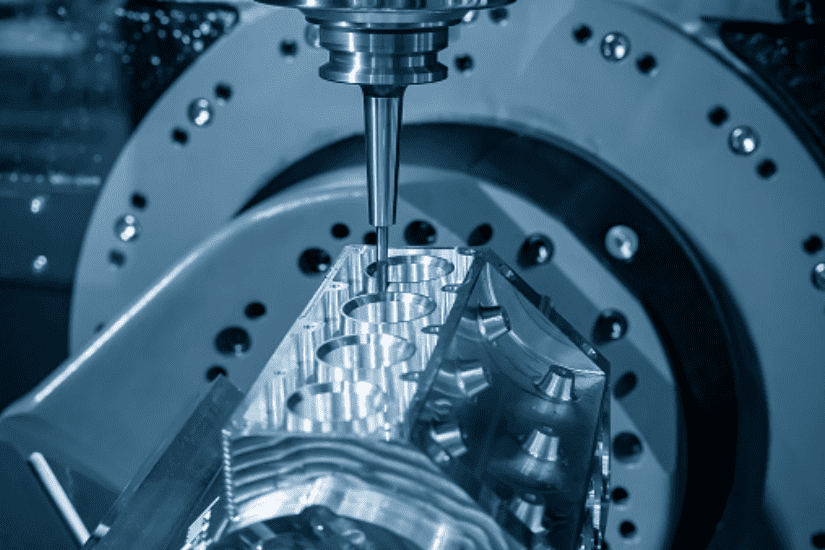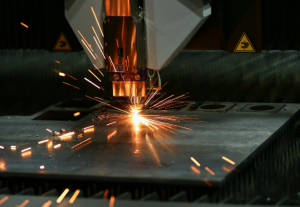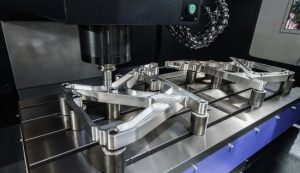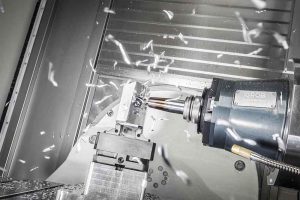To ensure quality control in medical CNC machining, focus on precise machine setup and calibration, monitor the machining process closely, apply rigorous quality control techniques, utilize advanced technology for accuracy, and address any non-compliance issues promptly.
Machine Setup and Calibration
Medical Cnc Machining Precision Foundation
Precise setting up and calibration of CNC machines are critical aspects in the manufacturing process of quality medical devices. The setup of this apparatus is a fine-tuning exercise to interpolate the machine parts and tools as per project-specific needs in medical manufacturing. This includes spindle orientation, tool length offsets and whether or not your machine table is parallell to the world.
Improved Precision Calibration
Calibration is required for correcting errors, such as those caused by wear and thermal effects that result in machine performance deviations. Set up the process:
- Geometric Alignment: Homing all machine axes to be perfectly perpendicular. This is done with the help of measuring and aligning axis alignments to micrometer accuracy using dial indicators.
- Alignment and Calibration with spindle: Spindle between centers is checked for any run-out through precision test bar, if found it to be out spec proper adjustment should be done in order minimize error. In an alternate preferred embodiment, the stroboscope is employed to calibrate spindle speed so that the CNC control unit definitely controls a rotational rate of said gearless machine according to set program values.
- Tool Calibration: Inspection of the precison on tool setters and checking if tools are pre- calibrated for diameter,length etc. Automated tool presetters measure each and every tool, then automatically enter the specific measurements into the machine control system which results in a shorter setup time with less human involvement.
Sophisticated Calibration Methodologies
CNC machines have their front-line technology for measuring and adjustments such as laser interferometers to measure the straight travel or angular displacement of machine components. For example, the Renishaw XL-80 laser interferometer system is accurate to 0.5 parts per million (ppm), making it capable of fine adjustments.
Routine Calibration Protocols
In a well-run medical device manufacturing plant, strict calibration schedules are used to ensure that quality and accuracy levels remain the same. However, even critical functions that significantly affect the quality of your products should be assessed far more often than twice a year with at least one or two other tests (note its common practice among companies to do full recalibrations semi-annually) every 3 months. A follow on test part is produced and measured to validate the machine has maintained good tolerances.
Operator Re-training for Improved Setup
Operators are taught how to operate the machinery and, more importantly, do basic calibration checks. Becoming knowledgeable about Thermal Growth and how the environment affects machine accuracy are typically modules included in training programs. This knowledge is essential for operators to make real-time tuning during the cycle in which the machine operates.
Documentation and Compliance
All calibration steps and details of the results are properly documented. This guide comes with performance data as it was before and after, settings tested at, environmental condition during the test along with technician foot notes. This not only allows meeting ISO 13485 for medical devices but also the invaluable audit trails can be used in quality assurance reviews and regulatory inspections.

Machining Process
Medical Device CNC Programmingoreaizing for Either
Quality CNC Programming to Begin the Machining Process For (largely medical device) programs where precision is a big deal, the tolerances are tiny and often sub ±0.0005 inches on many features. The high level of precision means that components can comply with the strict requirements necessary in medical applications. So, quite often programmers use sophisticated CAD/CAM software to simulate tool paths and catch crashes before the metal starts flying.
Tool Selection and Handling
Choosing the correct tooling is vital to help maintain the desired surface finish and dimensional tolerance. Medical components such as implants, which need to have very fine surface finishes are generally processed using tools manufactured from a micro-grain carbide material that offers excellent strength and wear resistance. They are used to ensure that no tools need changing during the process, which should keep you closer to consistent quality as possible and standard practice measures such like micrometers or tool presetting devices.
Material Handling and Setup
Material handling is done with responsibility to prevent any contamination especially in an environment like medical CNC machining. The materials that are most frequently used like titanium, stainless steel and PEEK have been kept in controlled environments prior machining. All parts are rigidly clamped for all machining and to eliminate the possibility of error due part movement during high-speed setup.
Adaptive Machining Techniques
In the manufacturing of medical devices, ensuring quality is paramount and adaptive machining techniques must be used to compensate for material inconsistencies as well as tool wear. It does this through adjusting your cutting conditions on-the-fly based upon force and vibration levels being monitored by a sensor. A typical example is that if a tool gets worn out, the CNC system can instantly alter feed rate as well as cutting speed to keep dimension accuracy.
Even monitoring and adjusting right then
Live data informs the operators where to make an immediate adaption in a machining process In the processing process, it can be used to detect spindle speed, feed rate and cutting depth other parameters for real-time monitoring or feedback adjustment. If say, the machine senses higher than normal vibration it can either increase feed rate or stop to see if tool health is maintained and possible damage of the workpiece avoided.
Machining Quality Assurance
The part is inspected using CMM and other metrology tools while in the process of machining. Inspections are made at key junctures of these features to make sure that they all being machined correctly. Statistical Process Control (SPC) techniques are used when high-volume production is required to ensure that process variability maintained.
Post-Machining Inspections
When the parts are finished on machine they go to the quality control which inspect each part for tolerance and specifications, this is the phase were we need more worker as of its hand job. This may comprise dimensional checks, surface finish testing and additional biocompatibility for particular medical devices. Batch inspection reports count for traceability and the quality assurance documentation of part.
Quality Control Techniques
Statistical Process Control (SPC)
SPC (Statistical Process Control) is a basic methodology and way to stay on top of quality control in medical CNC machining. SPC: Statistical Process Control, as doing & tracking the manufacturing performance data based on Gather Trending Data. In measurement, sizes of a batch of components may be sampled at adequate intervals and measured to have the data plotted on control chart such that even small process variations can easily identified. SPC is then used to help manufacturers hold process capability with tight tolerances, sometimes as narrow as ±0.0001 inches for critical medical device features;
The use of Sophisticated Examination Devices
Quality control is based mostly on the application of very sophisticated measuring equipment. A common tool for providing precise measurements of complex geometries is the coordinate measuring machine (CMM). An example would be the use of a CMM to validate orthopedic implants where accuracies can reach 0.00005″ or better in dimensional accuracy Folded into this will be laser scanning and optical metrology, which are used to expand the inspection scope by providing non-contact measurement – particularly those too delicate or small for tactile measuring.
FAI – First Article Inspections
First Article Inspection is essential when introducing new parts or going through major changes in manufacturing process. For FAI, the earliest piece of our production is inspected in detail to ensure all process outputs conform with designed specifications. This inspection includes all dimensions listed on the blueprint of a part, material specifics and any special processes. Those results are then carefully documented in an FAI report that must be signed off on before full-scale production starts.
Failure Mode and Effects Analysis (PFMEA)
What is Process FMEA (PFMEA)? the Proactive Quality House Plans Powerhouse Failure Mode and Effects Analysis, in short PFMEA. This allows you to break down the process of CNC machining step by step, identify points where it can fail and analyze its effect on the end product. This means for instance that if a tool wear could have effects in terms of dimensional accuracy, there will be reactions to these such as increased amount of changes or monitoring. This prioritization in this analysis aids quality issues based on how bad they are and the likelihood of them ever happening.
Rigorous Calibration Protocols
Machining and measuring equipment is regularly calibrated. Calibration schedules are strictly kept, and any type of calibration undertaking is recorded. Calibration standards are typically derived from national or international standards in order to ensure that measurement instruments perform as expected. Such as, when it comes to calibration, gauge blocks are certified from a respectable standard of ISO for follow-up.
Competent and adequately trained operators
Operators are trained not only in CNC machining operations but complete quality control procedures. This may be Instruction on in-process checking, handling measuring tools and data interpretation with process batch adjustments An increase in milled components: Regular, ongoing training helps ensure that operators have up-to-date proficiencies on machine practices and quality rules.
Using Quality Audits and Sustained Improvement
We conduct thorough quality audits regularly to check compliance with our set procedures for quality control and scope areas where we can improve. They ensure strict quality compliance on the shop floor, including material handling to final inspection in manufacturing. Audit findings eventually result in continuous improvement projects, which are vital for the evolution of quality practices to meet new demands within the medical industry.
Using Advanced Technology
Real Time Monitoring System Integration
State-of-the-art CNC machines include real-time monitoring systems that monitor and analyze ALL variables of the machining process. Such systems measure important parameters like tool wear, vibration and temperature using sensors. An example would be the above crankshaft line, which might monitor tool wear to within 0.0001 inches accuracy at any stage of production and issue alerts for a CNC operator or SCADA system before tolerances are breached so new tools can be ordered up well in advance when required. This proactive approach may reduce any possibility of having defects while boosting the consistency in production outputs.
Robotics and Automation Implementation
Especially in the medical sector, robotics and automation have reshaped CNC machining. Tasks that can be performed by robotic arms, like material handling, tool changing and extending the process to even machining itself. Continuous production cycles were made possible, also reducing human error. Prosthetic manufacturing was an early adopter of robotic systems, requiring to produce very precise and repeatable results. The systems, which have sub-0.0005 inch precision error margins, are much less variable than manual operations
Precision-Boosted Advanced Software
Typically, CNC machine precision has been improved greatly by software advancements. Contemporary CAD/CAM software simulate the entire machining process before any actual production. The simulation also highlights concerns in the tool path that might cause collisions or overload the tools. Thus, producers can pretune parameters in order to carry out processes without a hitch. All new firmware builds (and corresponding upgrades) deliver enhanced speed and precision capabilities, treated with up to 20% more precise algorithms.
Predictive Maintenance with Machine Learning
Abstract -Machine learning algorithms are more and more being employed for the prediction of maintenance demands as well nuts and bolts manufacture to achieve process improvement. Machine learning tools and algorithms help to analyze past data machine operations collected, predict tool life, indicator of failure in the machining component. For example, a predictive model can evaluate machining cycle vibration data from thousands of cycles to predict when for such as spindle bearing failure will occur based off slight changes in machine performance metrics like variations in speed and noise.
Laser and Optical Measurement Technology
This gives non-contact alternatives to control machined components: laser scanning and measurement technologies. Especially cold-rolled or more complex medical components where the risk of damage from contact measuring tools is high such a getSelectedMetawear. Laser scanners have a resolution as fine as 0.0002 inches and produce highly accurate, high definition models of the finished part for exacting quality control requirements. Optical comparators and laser micrometers are also used in final inspection stages to guarantee that every part meets the strict standards of medical device manufacturing.

Dealing With Non-Compliance
identification of out-of-specification parts
In medical CNC machining, finding parts out of specification as soon as possible is a necessity. This typically includes automated optical inspection devices which are placed immediately after machining processes. These systems spot violations of tolerances as narrow as 0.0001 inches, and can immediately alert human inspectors to any out-of-spec parts that demand a follow up inspection.
Root Cause Analysis
Whenever non-compliance is detected, it leads to an RCA (root cause analysis) where attempts are made to find out why deviation happened. The 5 Whys or fishbone diagram are some common techniques that we use to trace a problem back and identify how one thing led to another resulting in material defect, incorrect machine setting or programming error. For instance, if a set of surgical tools were discovered to have surface finishes that did not meet the limit specification the RCA could show that this was down to tooth wear on a cutting tool not replaced when expected.
Document Corrective Actions
Corrective actions can then be put into place in order to avoid each root cause from happening again. Some of these actions could be reprogramming the CNC machine, replacing some malfunction parts or administrating new training to the personnel for a proper operational procedures. It meticulously records every action – who performed the action, what changed and when. This documentation is necessary for conforming to quality management standards like ISO 13485.
Re-inspection and Testing
The damaged parts are then re-inspected following the application of corrective measures, after which they undergo a series of rigorous tests to confirm that all necessary specifications have been met. This can range from dimensional checks to functionality tests and in the medical arena, sterilization and biocompatibility testing. For example, a lot of bone screws would be retested to confirm their strength in tension and resistance to corrosion for implantation into the body.
A Continuous Improvement process
Feedback from the non-compliance and correction process is aggregated into a cycle of continuous improvement. These changes could involve changing process controls, updating training protocols or making adjustments to current quality assurance measures that will help improve the overall manufacturing quality. These enhancements are discussed in regular review meetings, which frequently result in modifications to the CNC programming or tweaks of quality control checkpoints.







